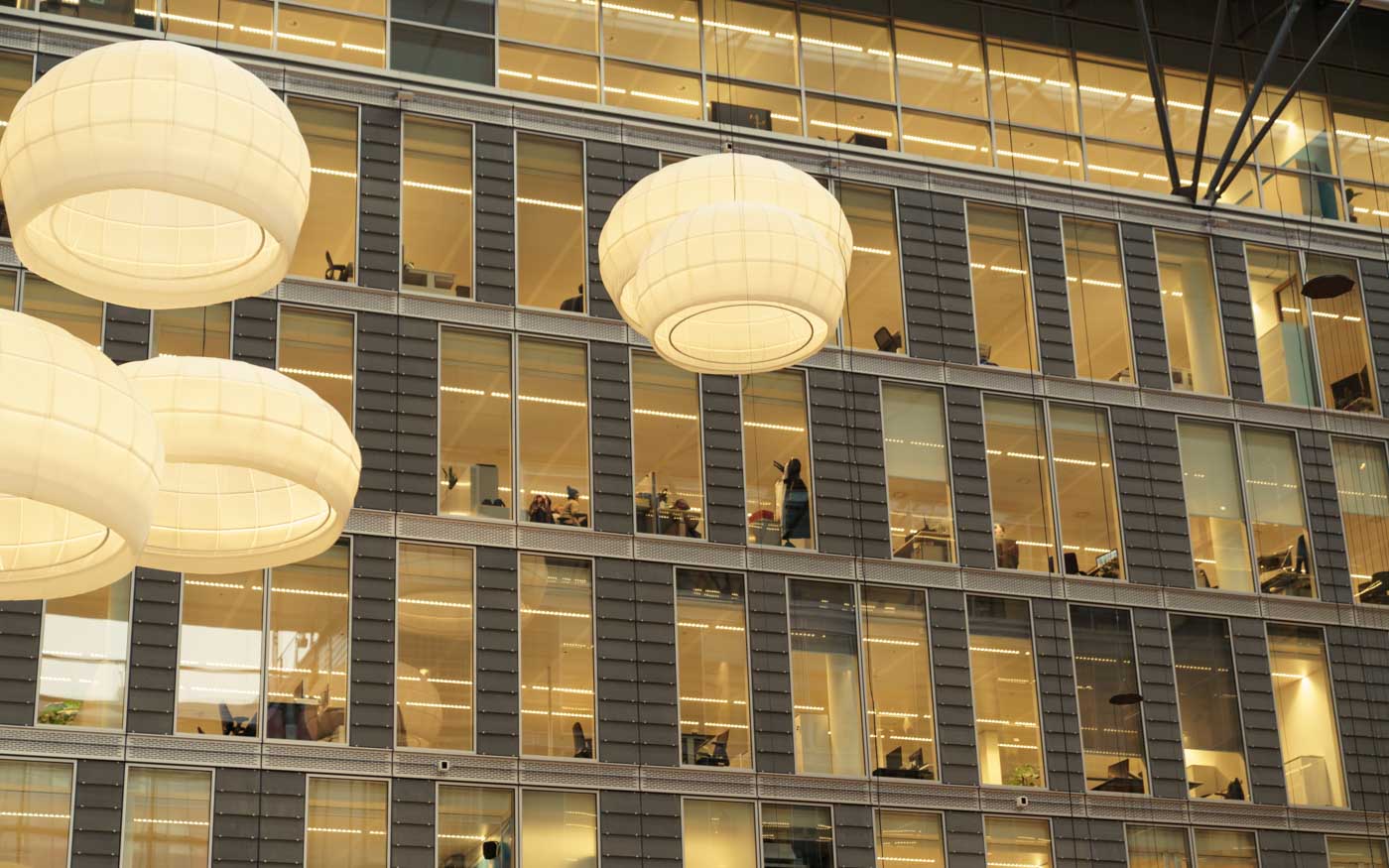The uncomfortable truth is that, more often than not, it’s the CEOs and their leadership teams who are at the heart of the “great plan, poor execution” dilemma. Looking in the mirror to assess how leadership styles and behaviours either enable or hinder change can be uncomfortable. But the payoff is huge: building a culture that truly drives execution.
Five Steps of Change
To keep things simple, driving change boils down to a five-step process:
- Awareness of the Problem / Opportunity
- Ownership for the Problem / Opportunity
- Solutions to the Problem / Opportunity
- Execution of the Solution / Opportunity
- Embedding of the Solution/ Opportunity
To highlight leadership’s critical role in driving change, we show how different management styles directly impact how teams behave and feel when driving change. The analysis reveals that execution is always a culture problem, and culture problems stem from leadership.
Universal Management Behaviours in Focus
The management style a company needs nowis always derived from its ‘how to win’ choices—whether cost, differentiation, focus, or a hybrid model. Porter’s competitive advantage model is still relevant today.

However, in 2025, few companies compete purely on cost, differentiation, or focus. We now operate in an era of hybrid competitive models, where evolving competitive strategies demand multidimensional and adaptive leadership styles. The days of leading teams mostly with a single leadership approach are behind us.
With the five-step model, we’ve highlighted universal management styles and leadership behaviours—those that every modern leader should embrace to ensure they drive, rather than hinder, change.
1. Awareness of the Problem
What enables it
Management Style: Visionary leadership
Leader’s core belief: We have the responsibility and opportunity to improve our customers’ lives through our work, together.
Leadership behaviour: Encouraging everyone to identify core issues and making the problem visible to those who need to see it.
Culture it creates: A Culture of Dynamism
Employee behaviours it drives:
- Proactive problem identification
- Open communication of challenges
- Continuous improvement mindset
Emotional Climate it builds: Curiosity and empowerment: – Employees are inspired to spot issues early, knowing they can contribute to solutions and improvements.
What kills it
Management Style: Autocratic control
Leader’s core belief: Without strict control, things fall apart. Efficiency and order require centralised leadership.
Leadership behaviour: Focusing only on what’s convenient, failing to address real issues.
Culture it creates: A Culture of Dysfunction
Employee behaviours it drives:
- Blame-shifting
- Avoidance of responsibility
- Protecting self-interest
Emotional Climate it builds:Fear of punishment – Raising issues feels risky, creating a defensive environment where problems stay hidden.
2. Ownership for the Problem
What enables it
Management Style: Trust and empowerment
Leader’s core belief: People thrive when they own their work and have the freedom to act.
Leadership behaviour: Giving individuals the autonomy to make decisions, with clear expectations and barriers removed.
Culture it creates: A Culture of Entrepreneurial Ownership
Employee behaviours it drives:
- Self-starting ownership
- Initiative to tackle problems head-on
- Commitment to finding and implementing solutions
Emotional Climate it builds: Confidence and accountability – Employees take pride in their ownership, knowing their input has direct impact.
What kills it
Management Style: Micromanagement
Leader’s core belief: If I don’t control every detail, things will go wrong.
Leadership behaviour: Undermining responsibility by controlling every action, stifling ownership.
Culture it creates: A Culture of Dependency
Employee behaviours it drives:
- Following orders without questioning
- Lack of initiative
- Waiting for instructions rather than acting independently
Emotional Climate it builds: Helplessness and frustration – Employees feel disconnected from the problem-solving process, passive instead of proactive.
3. Solutions to the Problem
What enables it
Management Style: Coaching and mentorship
Leader’s core belief: People grow through guidance and experimentation, not just instructions.
Leadership behaviour: Encouraging innovation and experimentation, while providing guidance and support for improvement.
Culture it creates: A Culture of Continuous Learning
Employee behaviours it drives:
- Feedback-driven improvement
- Challenging the status quo
- Risk-taking and creative problem-solving
Emotional Climate it builds: Excitement and growth – Employee feeling motivated to experiment, learn from mistakes, and continuously improve.
What kills it
Management Style: Command-and-control
Leader’s core belief: Strict control ensures efficiency; too much freedom leads to mistakes.
Leadership behaviour: Stifling creativity and learning by enforcing rigid rules and preventing independent thinking, teaching people to be comfortable with doing the minimum necessary.
Culture it creates: A Culture of Complacency
Employee behaviours it drives:
- Adherence to the status quo
- Resistance to new ideas
- Lack of proactive problem-solving
Emotional Climate it builds: Stagnation and disengagement – Employees feel disconnected, passive, and disengaged.
4. Execution of the Solution
What enables it
Management Style: Clear direction and accountability
Leader’s core belief: Success comes from disciplined execution—clear goals, accountability, and focused effort turn plans into reality.
Leadership behaviour: Setting clear goals, aligning roles and responsibilities, and ensuring consistent follow-through to get results.
Culture it creates: A Culture of Task Completion
Employee behaviours it drives:
- Focus on execution and closure
- Perseverance in the face of obstacles
- Setting clear, achievable milestones
Emotional Climate it builds: Pride and achievement – Employee feeling a sense of accomplishment as tasks are completed and results are visible.
What kills it
Management Style: Weak direction and shifting priorities
Leader’s core belief: No core belief—just ineffective leadership.
Leadership behaviour: Lack of clarity on goals and constantly changing direction, causing confusion and unfulfilled projects.
Culture it creates: A Culture of Unfinished Work
Employee behaviours it drives:
- Abandoning tasks mid-way
- Lack of follow-through
- Moving on to new tasks without finishing old ones
Emotional Climate it builds: Frustration and resentment – Employees feel their efforts are wasted, leading to burnout and disengagement.
5. Embedding of the Solution
What enables it
Management Style: Proactive, transformative leadership
Leader’s core belief: Change is necessary for growth, and leaders must help teams drive transformation despite resistance.
Leadership behaviour: Overcoming system-level resistance and pushing through when things get tough.
Culture it creates: A Culture of Resilience and Integration
Employee behaviours it drives:
- Relentless pursuit of full implementation
- Systematic integration of solutions into everyday practices
- Empowering teams to make the solution permanent
Emotional Climate it builds: Determination and commitment – Employees feeling driven to see things through, with a shared commitment to overcoming obstacles and making change stick.
What kills it
Management Style: Fixed mindset leadership
Leader’s core belief: Things must stay as they are—any disruption risks failure.
Leadership behaviour: Allowing the system to resist change, not addressing obstacles, and giving up when progress stalls.
Culture it creates: A Culture of Stagnation
Employee behaviours it drives:
- Resistance to change
- Inconsistent follow-through
- Giving in to existing systems rather than pushing through barriers
Emotional Climate it builds: Defeat and apathy – Employees feel their efforts are futile, leading to disengagement and stagnation.

About the author

ADVISOR, STRATEGY AND CULTURE
Tintti Sarola
Tintti Sarola is a strategist, transformation lead, and culture expert who believes the journey defines the outcome. With a background as a national team-level dressage rider and a track record of podium finishes up to the European Championship level, she brings the same intensity, focus, and commitment to business as she once brought to elite sport.
Her career spans law, tech, strategy, and transformation – from her early days in contract law and IPR to leading digital transformation, business development, and culture-powered change initiatives. Tintti has helped build successful start-ups, scale family-run businesses, and reshape how established organisations think, behave, and operate.
She specialises in helping leadership teams rewire how they work – aligning strategy with behaviour, shifting entrenched patterns, and building the human systems that make change stick. Sharp on strategy and fluent in human dynamics, Tintti is known for cutting through noise, connecting the dots, and helping companies move – fast and together.

